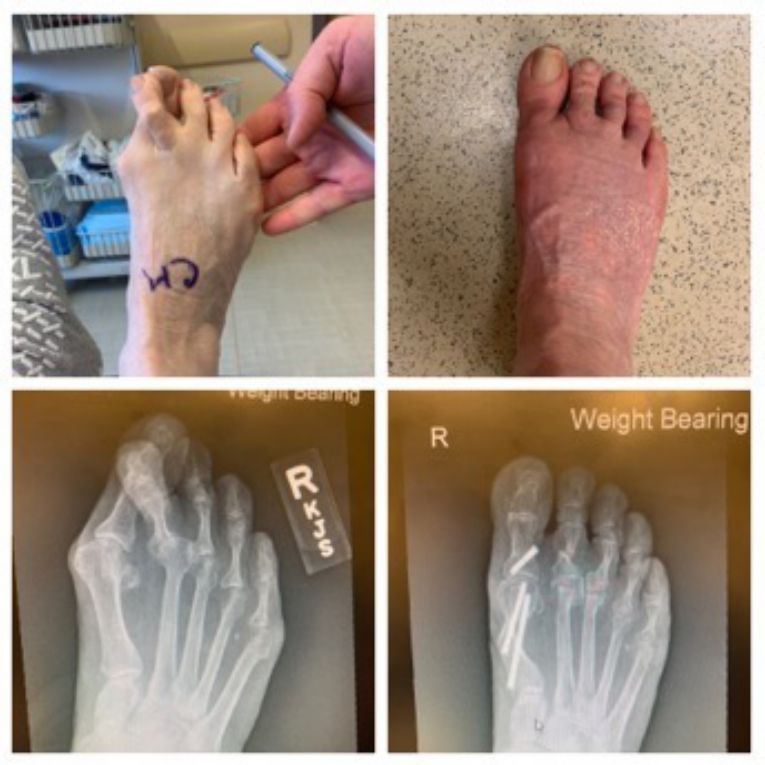Metatarsalgia is a painful condition that affects the ball of the foot and can be caused by a variety of factors. One minimally invasive treatment option available is the use of DMMOs, or distal metatarsal metaphyseal osteotomies.
DMMOs involve making a small incision near the affected area and using specialized instruments to cut the metatarsal head and allowing it to shorten and elevate. This helps to redistribute pressure away from the affected area and onto other parts of the foot, relieving pain and discomfort. It can also be used to assist with correction of hammertoes and other forefoot conditions.

One of the benefits of DMMO surgery is that patients are often able to bear weight immediately after the procedure or the next day when the nerve block wears off. This means that there is typically less downtime associated with the procedure, allowing patients to get around and recover easier than traditional open surgery which requires 6-8 weeks of crutches and non-weight bearing.
In addition to DMMOs, another minimally invasive treatment option for metatarsalgia is the use of endoscopic Strayer procedures. This involves making a small incision in the back of the calf using an endoscope loosen the calf muscle and relieve Achilles tightness which can lead to forefoot pain and may be contribute to the condition.
Overall, minimally invasive treatments such as DMMOs and endoscopic Strayer procedures can be effective options for individuals suffering from metatarsalgia and other forefoot conditions. If you are experiencing foot pain or discomfort, be sure to talk to your doctor about all of the available treatment options to find the one that is right for you.



